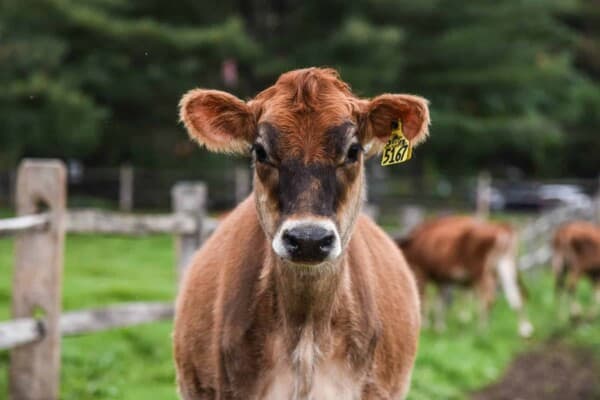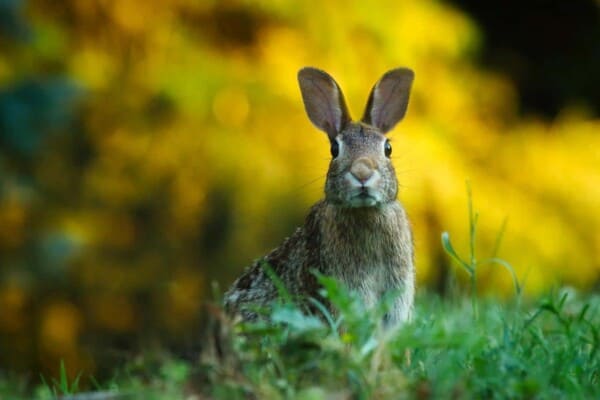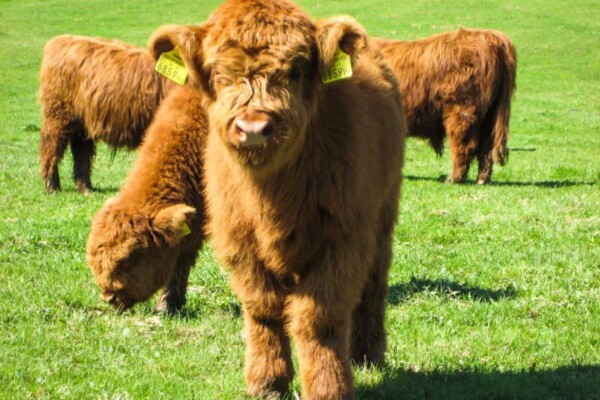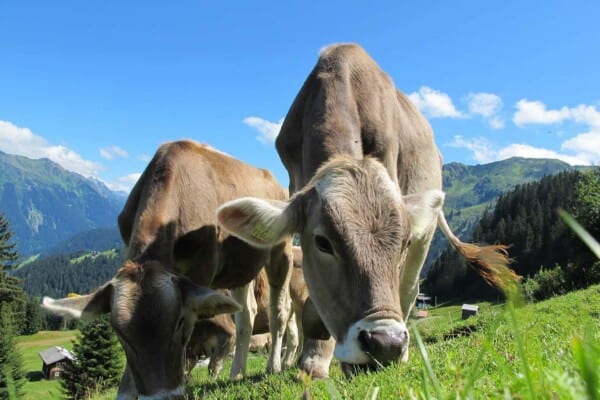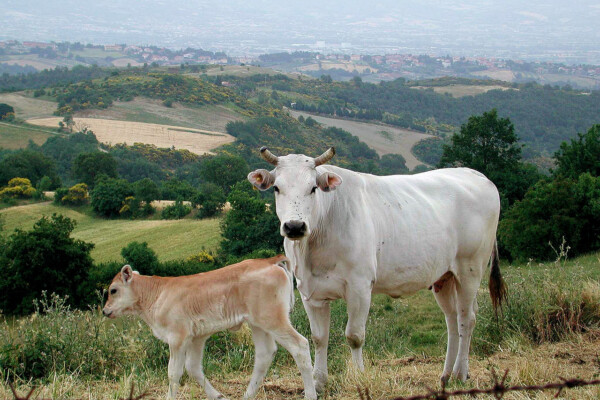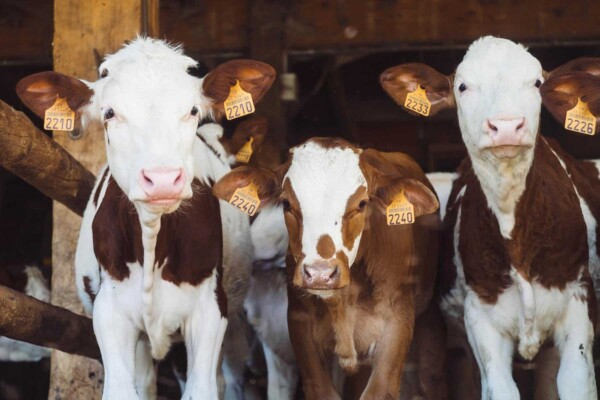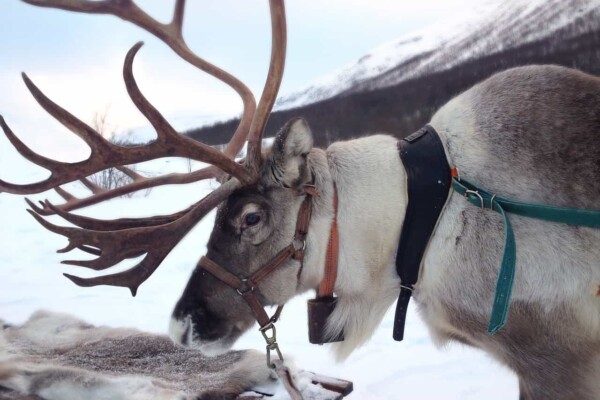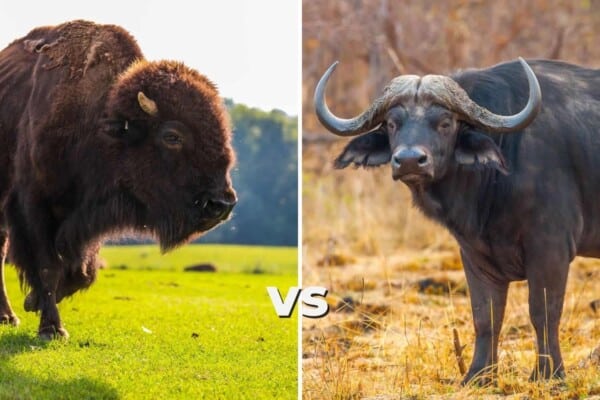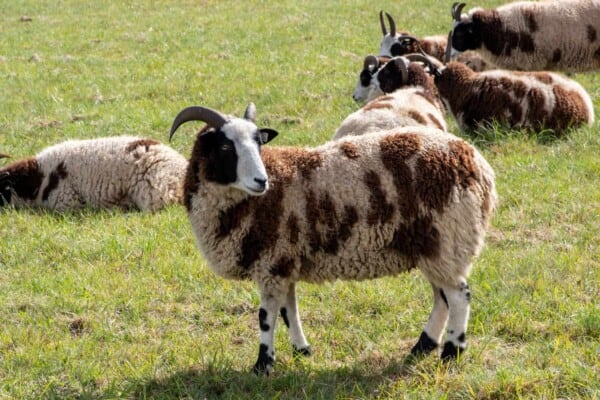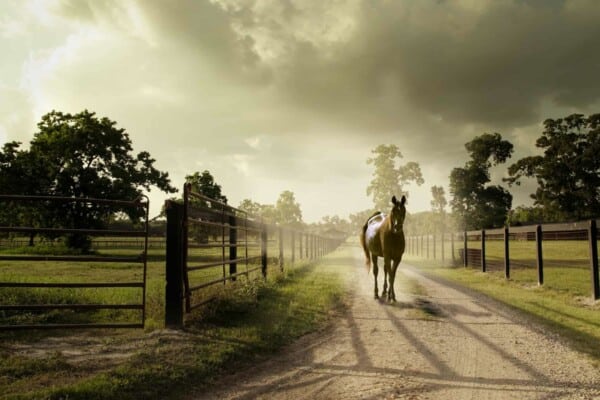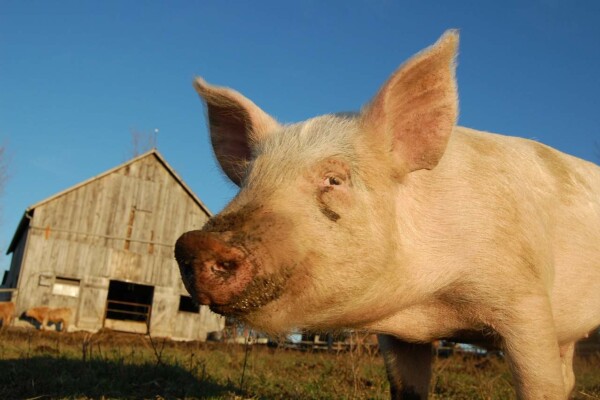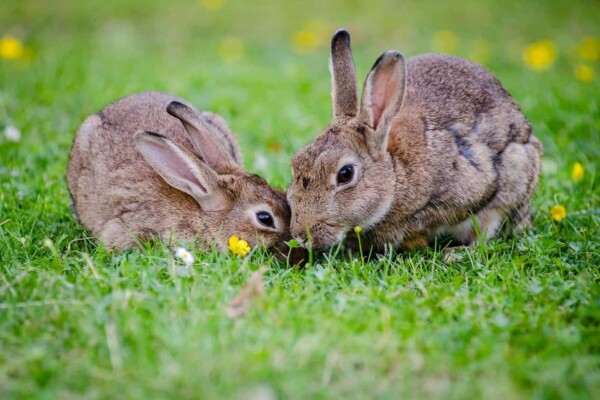Clothes and accessories made out of cashmere are known as some of the most luxurious and comfortable choices you could ever make out there.
That’s because cashmere is known for its softness, warmth and most importantly, its impressive durability, which is why it’s a fan-favorite amongst fashion designers.
But, where exactly do you get cashmere from and most importantly, can you become your own cashmere supplier?
The answer to that is quite a resounding yes and yes, and it all comes down to a cute little specimen known as the cashmere goat.
But, is it really a good choice to raise your own cashmere goats and more specifically, what should you know before you actually get your hands on one?
That’s what we’re here to find out, so get ready because in this little guide we will be going over everything you need to know about cashmere goats, starting off with:
What Is Cashmere?
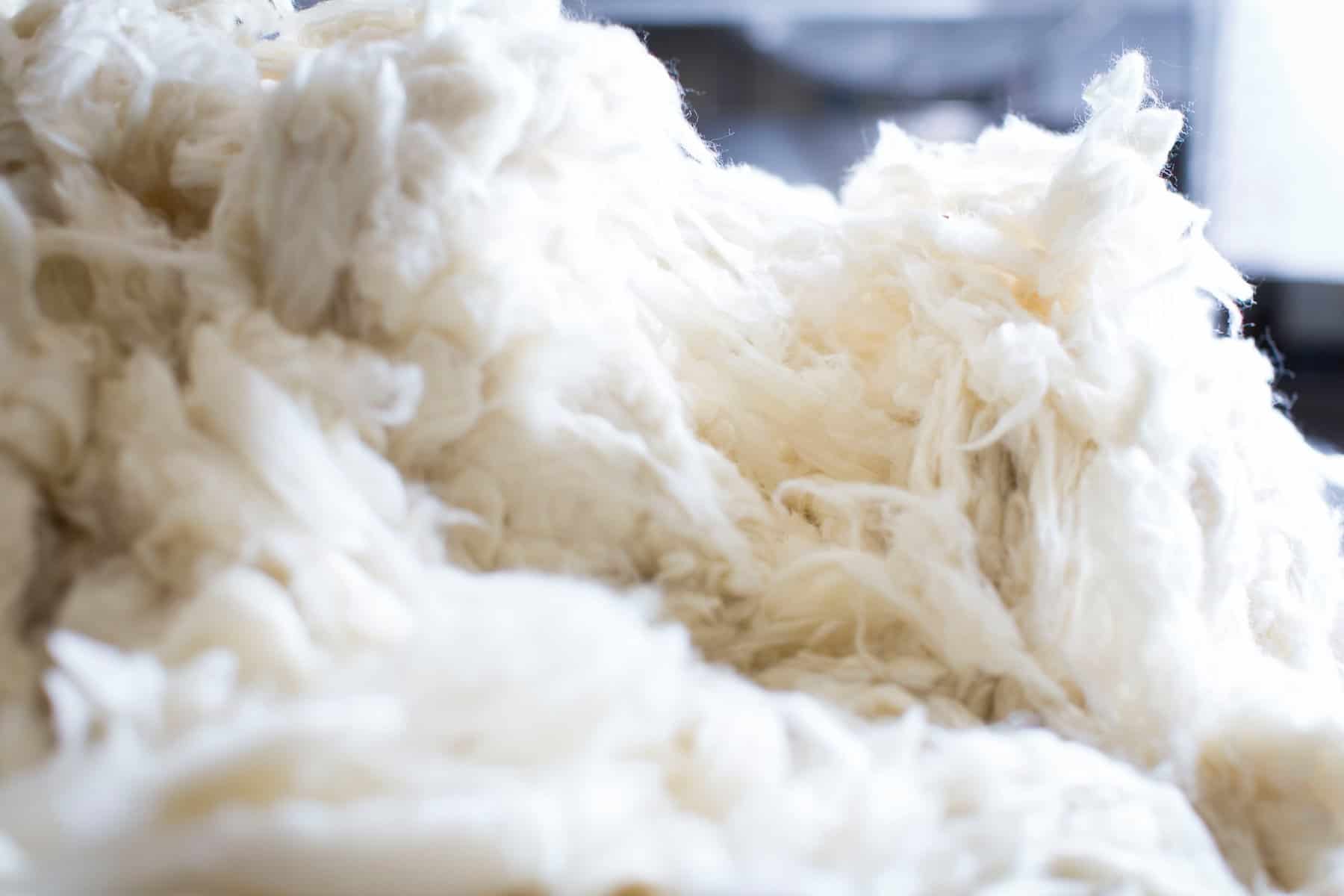
Cashmere wool is the material made out of the goat hair that can be found in certain parts of Asia, including Iran, Mongolia, India and China.
They can only be collected during the winter as that’s when the goats tend to grow a soft downy undercoat that helps protect them from the cold.
The goats will start growing their undercoats as soon as the temperatures drop, and as such you should keep a close eye on them to make sure that they don’t grow too much for their own good.
Usually though, you will be able to collect their undercoats as soon as spring comes around. Next up just comb them out and start turning the fabric into the fine yarn that is known as cashmere wool.
But what makes cashmere wool so much better than other fabrics? Well, to put it bluntly, it is simply put just the superior product as it is way softer and finer to the touch.
At the same time, cashmere wool is almost eight times warmer than the standard sheep’s wool, which already makes it a great alternative to that.
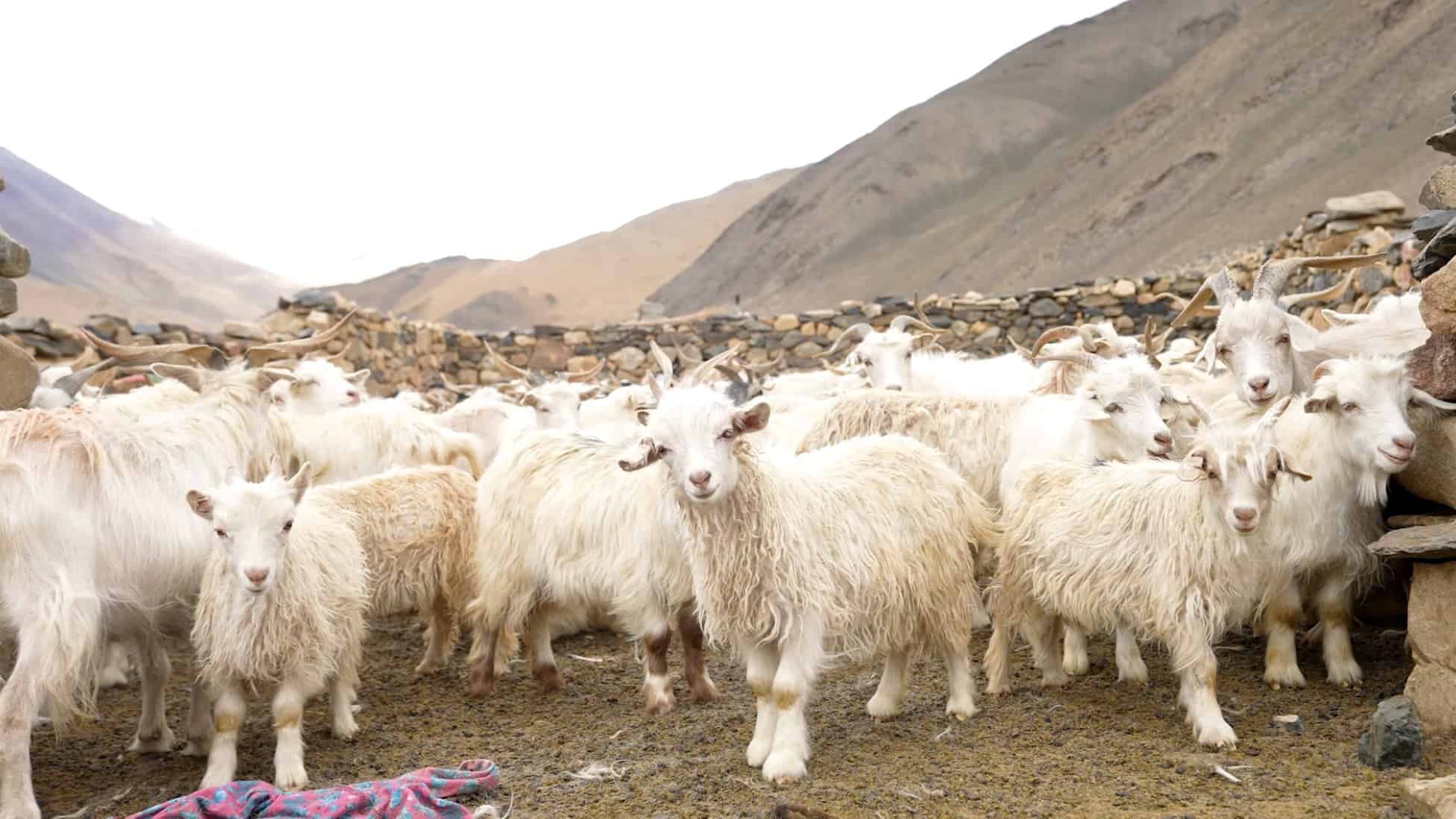
Durability wise, cashmere is also far superior to normal sheep’s wool as it can easily withstand the same pressure that would break through sheep’s wool with ease.
Cashmere is also quite amazing when it comes to its insolation as it breathes way better than any other fibers around.
This means that when your body does start to warm up, you will not overheat all that easily, which means that you will be able to wear cashmere clothes even during warmer seasons.
Standard sheep’s wool is also known for causing irritation every now and then. You won’t have to worry about any of that if you wear cashmere though. That’s because cashmere is known as the fabric that never bothers your skin.
Last but not least, we would like to bring up the fact that cashmere is naturally elastic, which makes it less prone to stretching and sagging over time. This is a very important quality to have if you want to wear the same clothes for prolonged periods of time.
Cashmere Goat Breeds
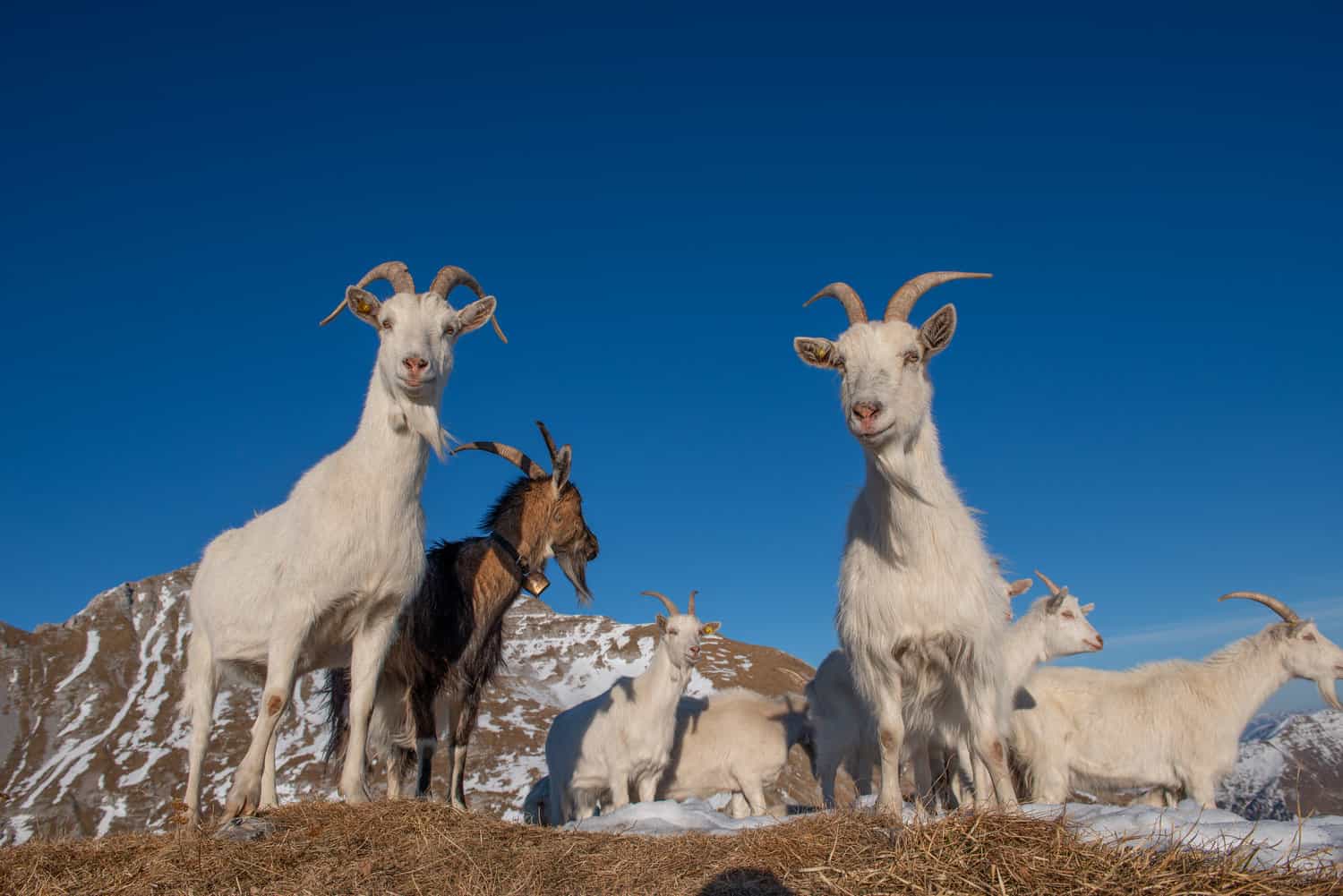
There are quite a few different cashmere goat breeds out there for you to look into, and depending on which type you go for you may get a different quality cashmere standard.
But regardless, any of these will work out perfectly fine if you want a good cashmere goat to add to your herd:
The Australian Cashmere Goat
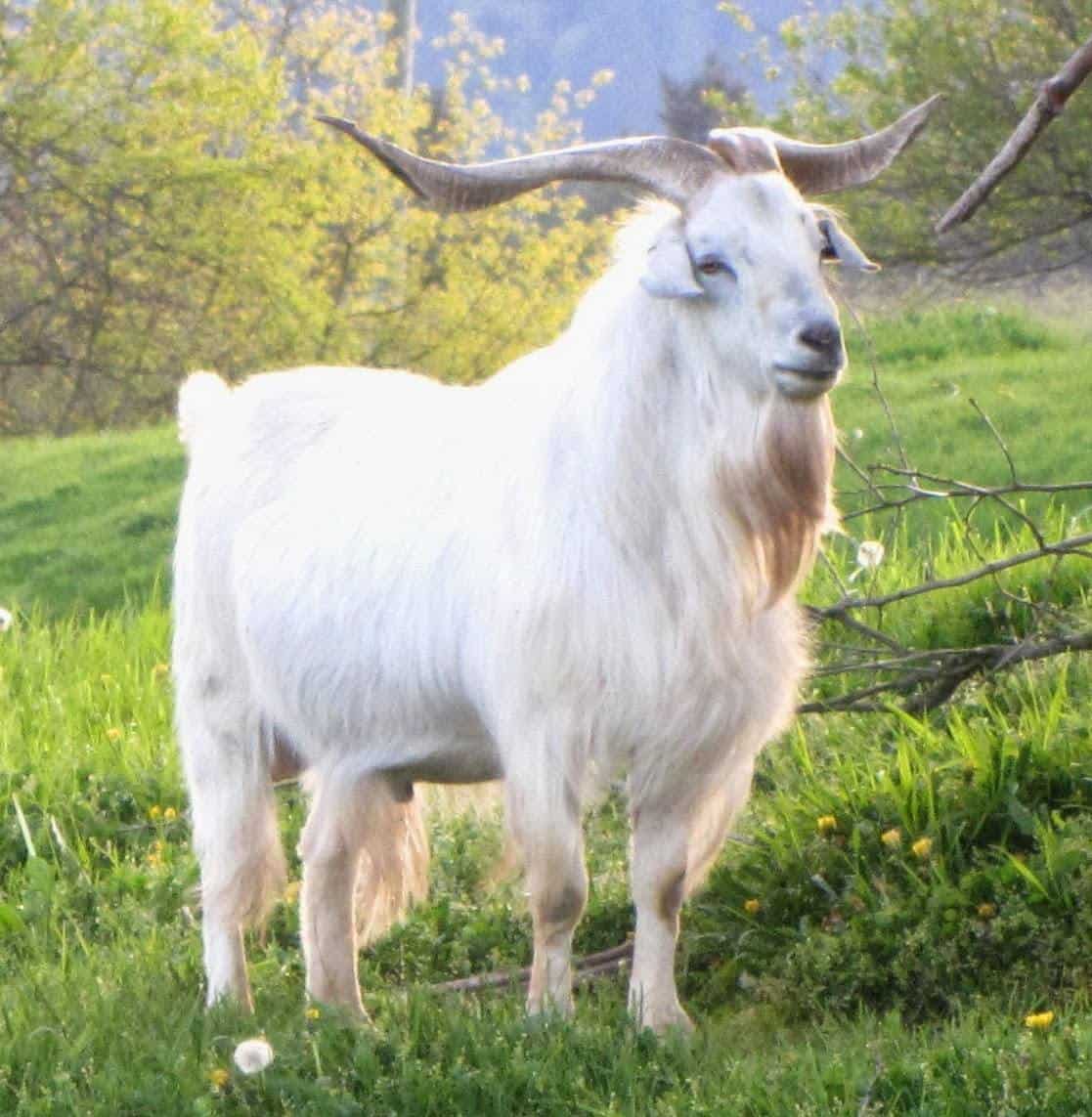
This breed is especially popular thanks to the luxurious cashmere wool that it produces. As the name implies, it was first developed in Australia, only for it to gain widespread appeal soon after.
The wool can be harvested every year, at a rate of 250g per goat, which makes it one of the best options around if you want to commercialize it.
While not the most cashmere wool you can get, the quality speaks volumes when it comes to the Australian Cashmere goat.
Because of its low production though, it is recommended that you invest in several goats if you want to actually make a living off of commercializing their cashmere wool.
Luckily, the Australian Cashmere Goat’s wool is very sought-after, so you won’t have any problem finding clients.
The Changthangi Cashmere Goat
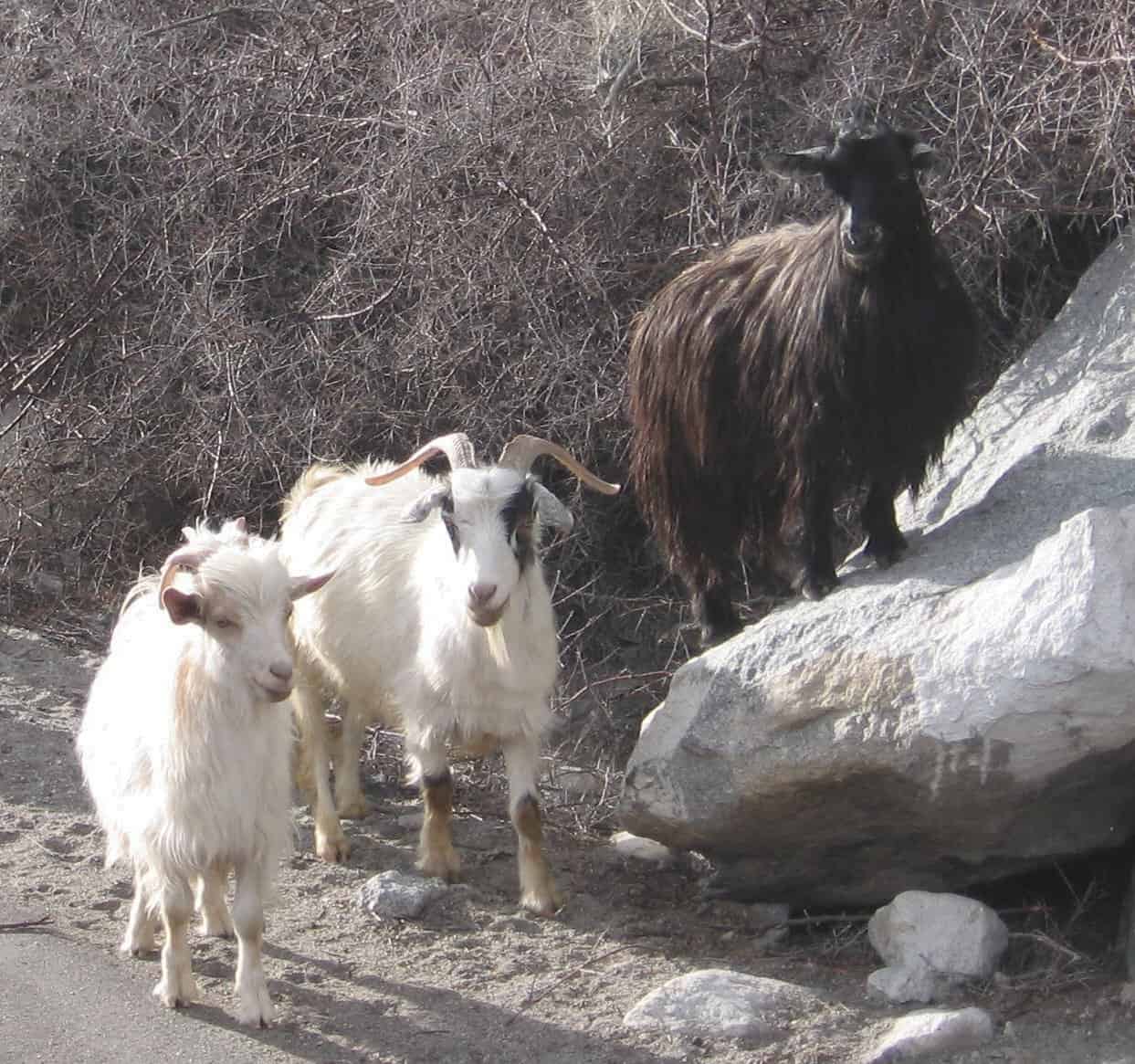
This goat breed can be found in China and its surrounding countries. Most Changthangi Cashmere goats are also white colored, but you may also come across the occasional black, grey and brown hues if you look far enough.
By far the most interesting part about raising the Changthangi Cashmere goat is the fact that you will get to gaze upon their unique looking horns.
Their horns are long and twisted near the end, making it a very strange and beautiful specimen to look at.
While definitely one of the more expensive variants around, the Cashmere wool you will be getting from this goat breed is definitely worth the investment alone. Do keep in mind though that they do require special treatment to make sure that the quality of the wool doesn’t waver.
The Hexi Cashmere Goat
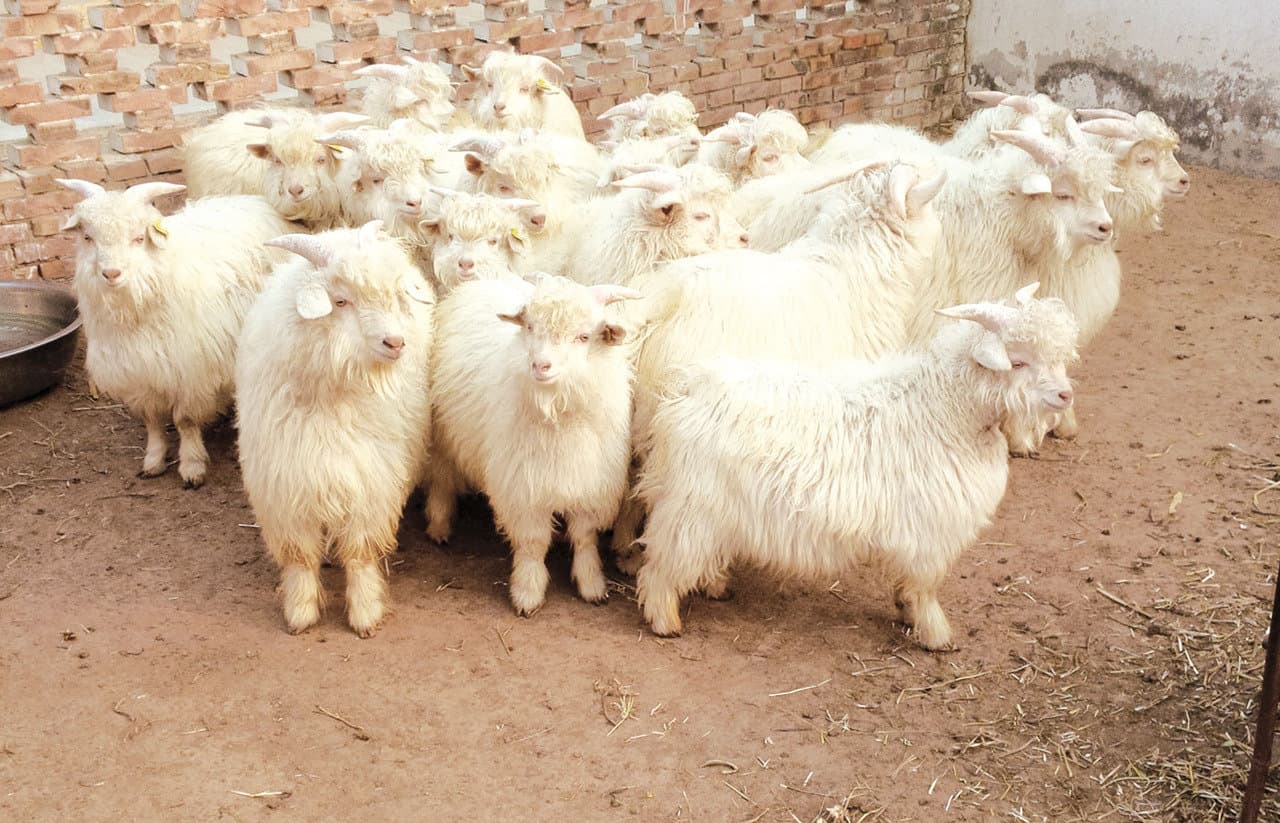
By far the most interesting part about the Hexi Cashmere goat is the fact that it prefers the high-altitude desert and semidesert regions over anything else.
They specifically adapted to survive and live in this harsh environment and as such you won’t usually find them in western areas.
The typical Hexi Cashmere goat can produce around 184g of Cashmere wool per season, which is not that much considering the fact that you need around 3kg or so to make a sweater.
The Inner Mongolia Cashmere Goat
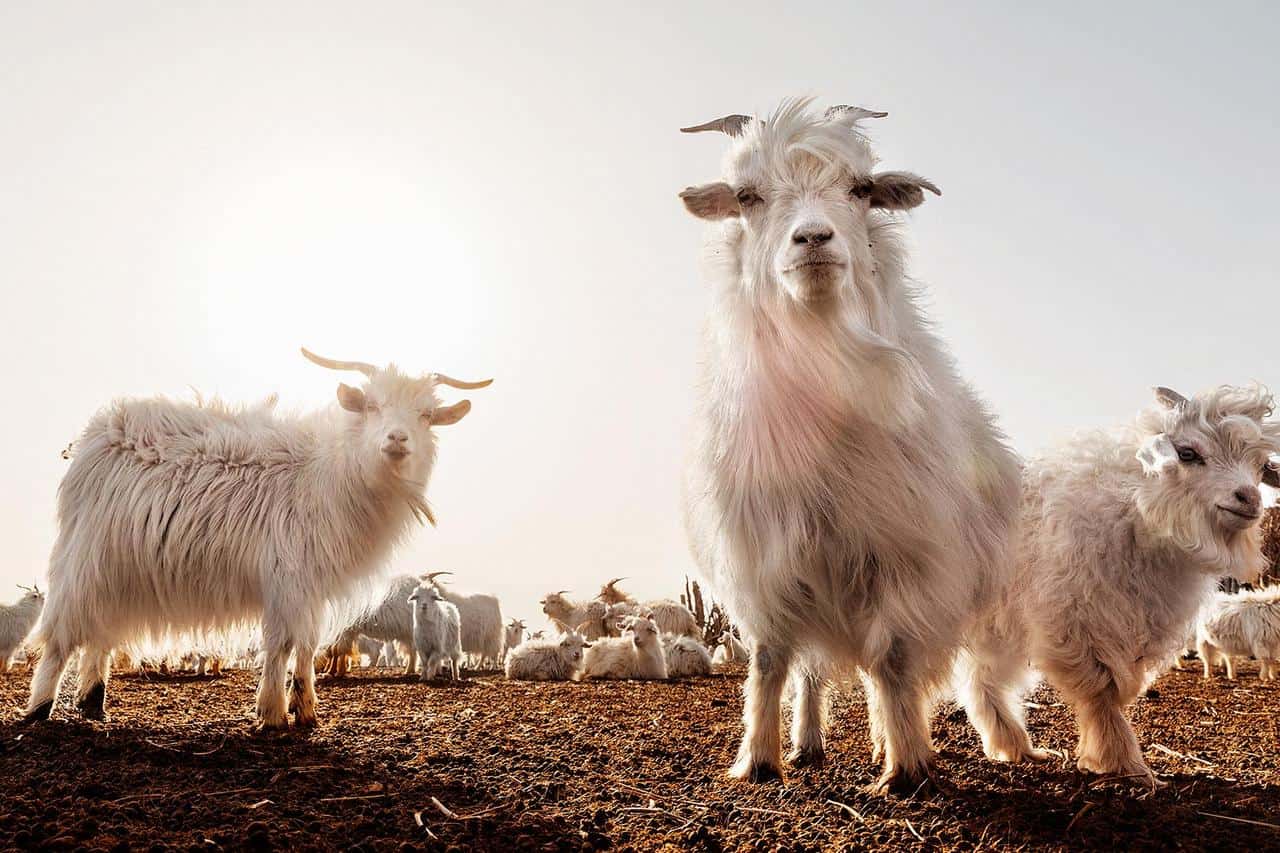
This is a breed of domesticated goat that can be found in the Gobi desert region of northeastern China or in most of its nearby countries.
Interestingly enough, it is one of the most popular varieties of Cashmere goat around due to how soft and lightweight its coat is.
The Licheng Daqing Goat
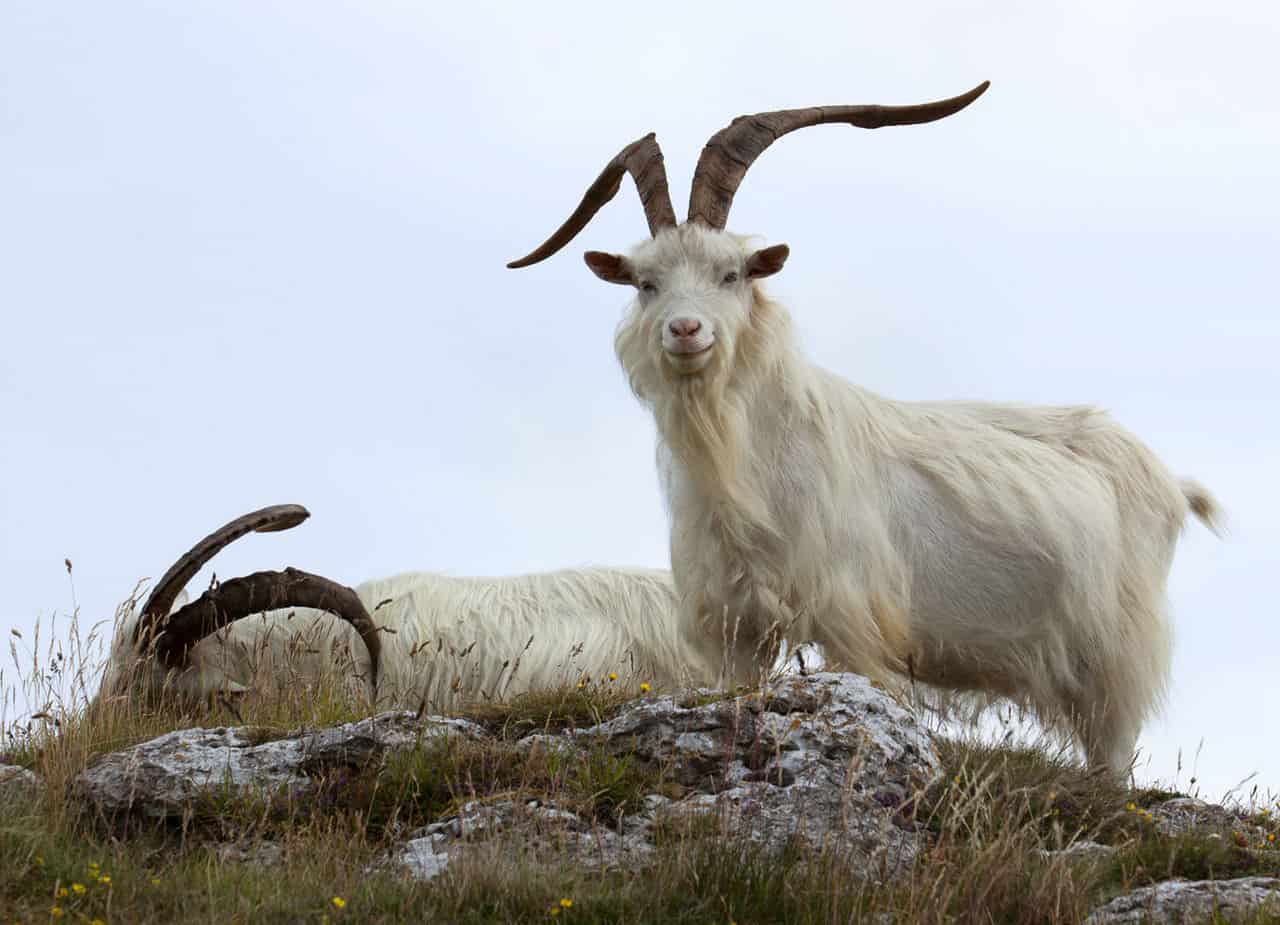
This is a dual-purpose domesticated goat species that is quite popular both for its luxurious cashmere and for its meat production.
The standard Licheng Daqing goat’s fur is mostly brown, although you may also find white and black varieties out there.
The Licheng Daqing goat produces only around 115g of cashmere every year, but don’t worry because the high quality of the fabric more than makes up for its low quantity.
The Liaoning Cashmere Goat
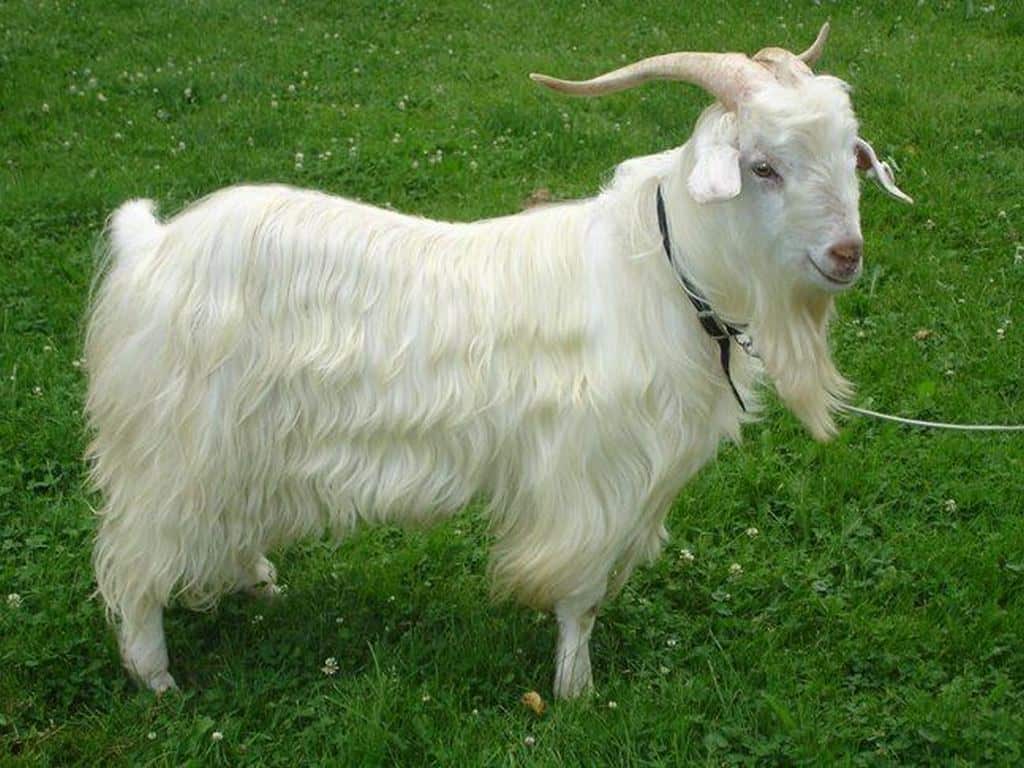
This breed was officially developed in the 1960s specifically to become the next big cashmere producer out there.
As such, it is a lot more proficient at it than most other goat breeds, being capable of producing as much as 326g of fiber per season.
The wool is also known for being very soft and delicate, and the breed itself is a very important component in the improvement of other breeds.
The Tibetan Plateau Goat
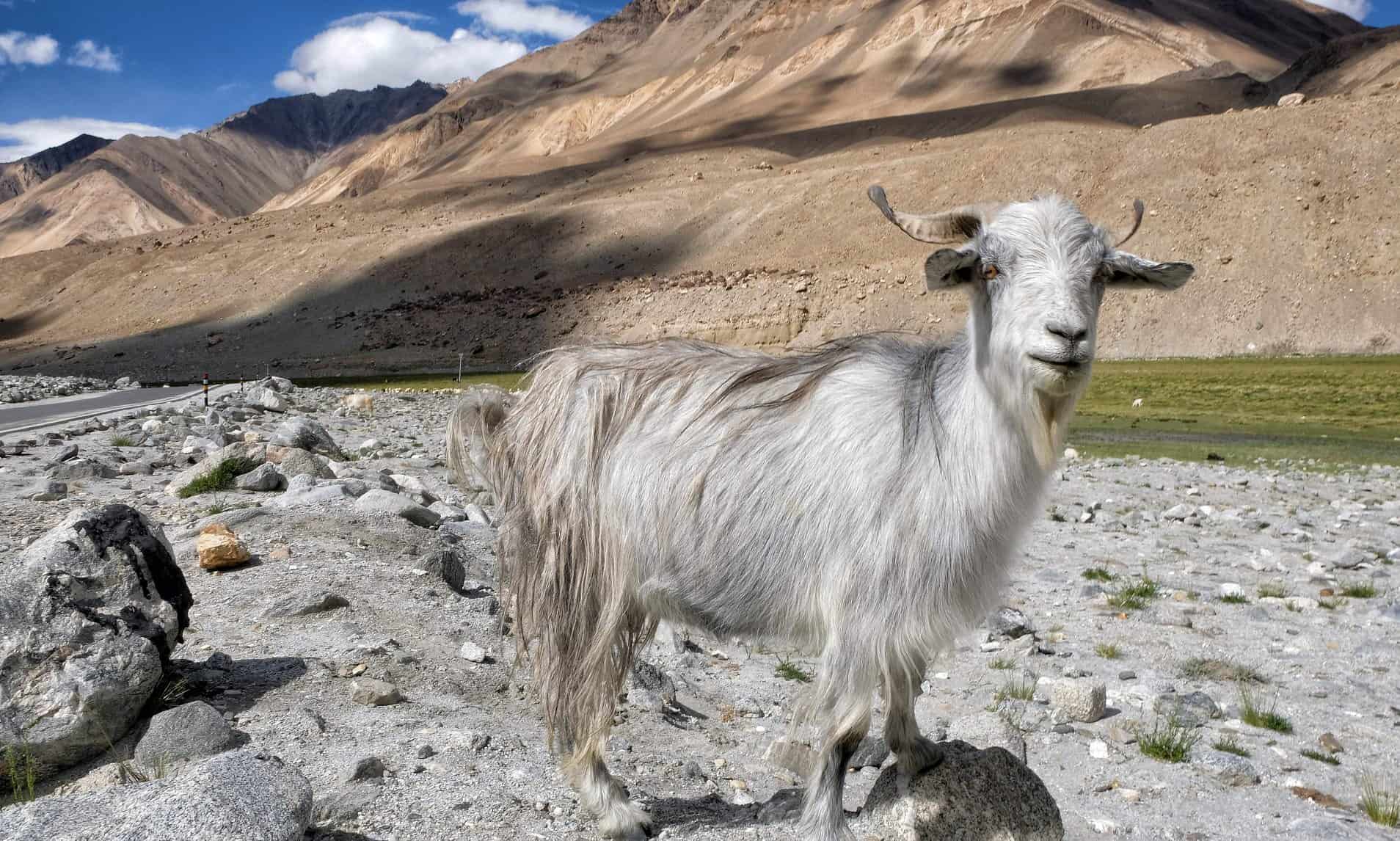
As the name implies, this breed can be found primarily around the Tibetan Plateau, with a few exceptions being some special areas around China, India and Nepal.
It can produce a maximum of 197g of cashmere per season, although if you want to invest a bit more you can get yourself a Tibetan Plateau buck since they produce around 261g per season.
The Luliang Black Goat
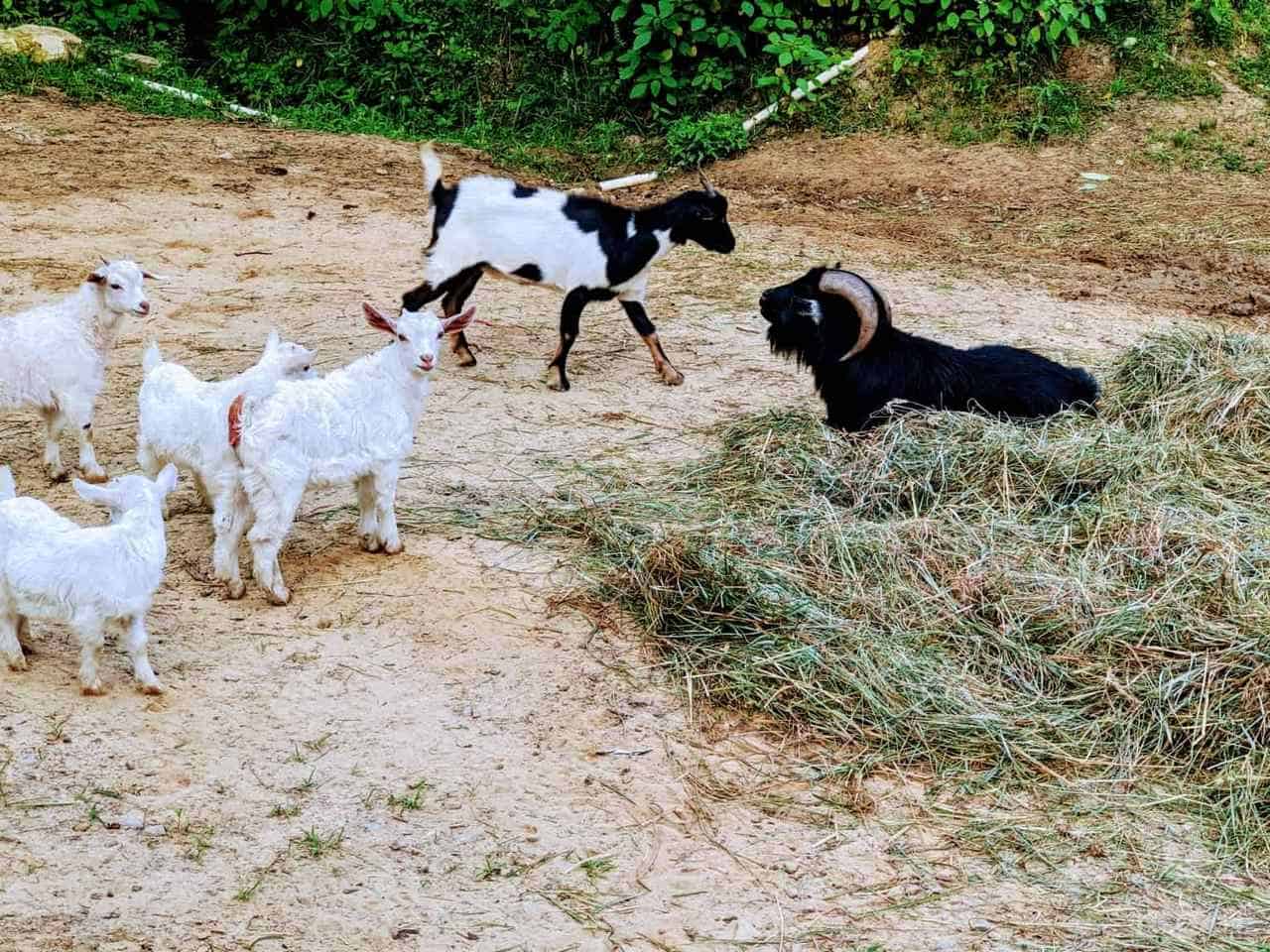
This is a special breed that has been discovered in the Yunnan Province of China. It is a dual-purpose breed that is known for providing ample amounts of cashmere wool and high-quality meat.
The Luliang Black Goat’s fur is usually pure black, but you may also come across the occasional dark brown, grey and even gold in some cases.
The Quzhumuqin Goat
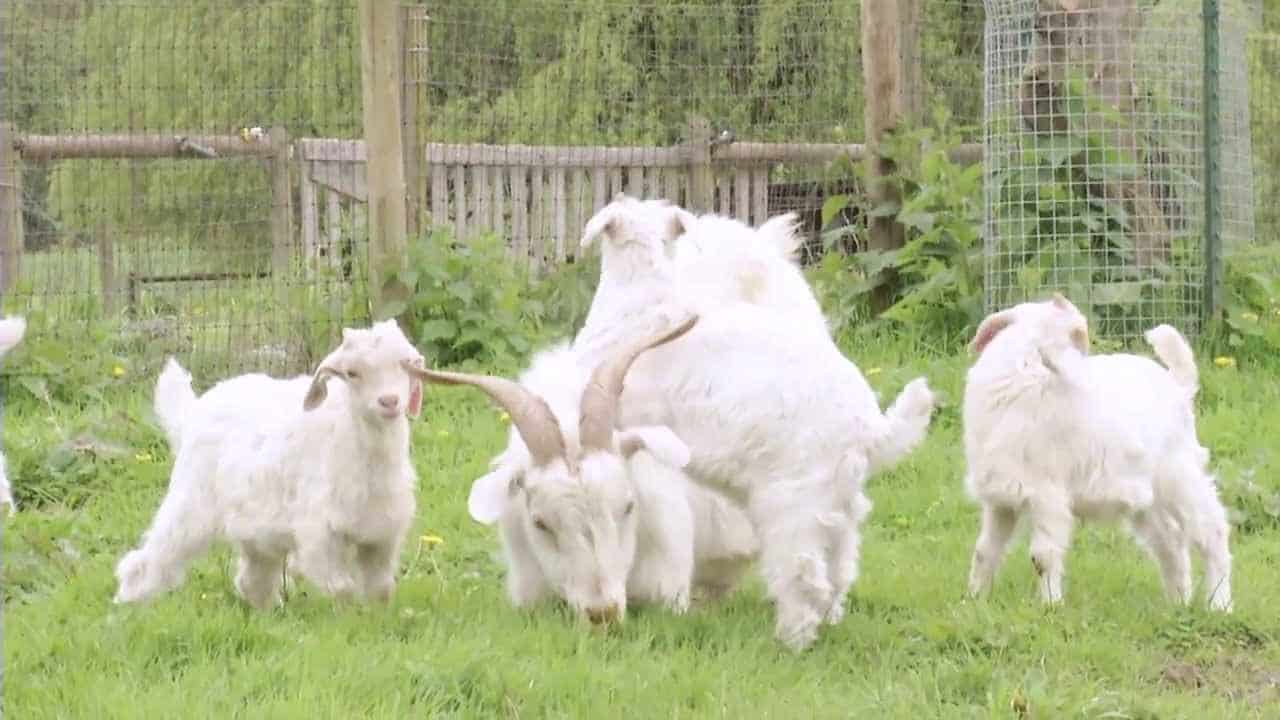
Also commonly referred to as the Wuzhumuqin goat, this is a relatively newly developed breed that was officially recognized back in 1994.
It is known for its large and thick horns as well as its white coat. On top of that, the cashmere wool they produce is just stellar.
The Zalaa Jinst White Goat
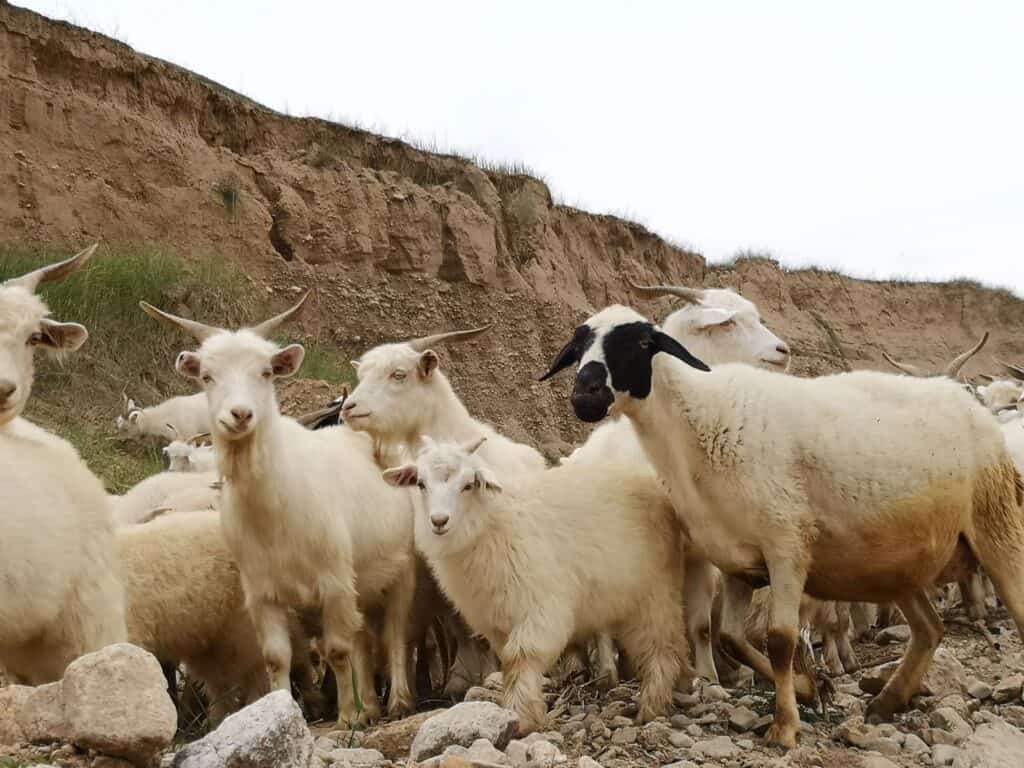
If you’re primarily looking for a pure white goat breed, you have got to get your hands on a Zalaa Jinst goat.
Being endemic to Mongolia, this breed is recognized around the world for its high adaptability as well as its more nomadic lifestyle.
On top of all of that though, the Zalaa Jinst White goat breed is most popular for being able to produce as much as 380g (per male) and 290g (per female) of cashmere every season.
This makes this breed one of the best if you are looking for a solid producer of cashmere that you can easily commercialize and make a living off of.
The Zhongwei Cashmere Goat
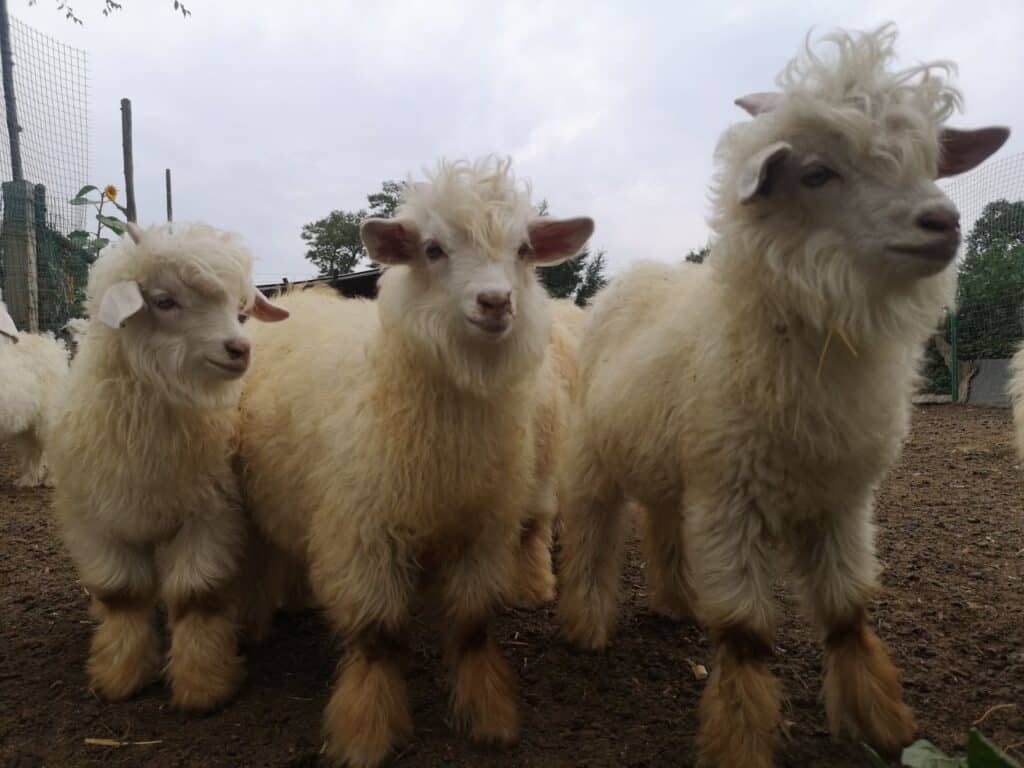
The Zhongwei Cashmere goat breed is by far one of the most unique varieties you’ll find out there. It can usually be found in the deserts around the town of Zwongwei from China, which already makes it quite difficult to find around the US.
On top of that, this breed is known for its production of soft and exquisite fiber, being capable of producing as much as 216g of cashmere every year.
Cashmere Goat Breed Standards
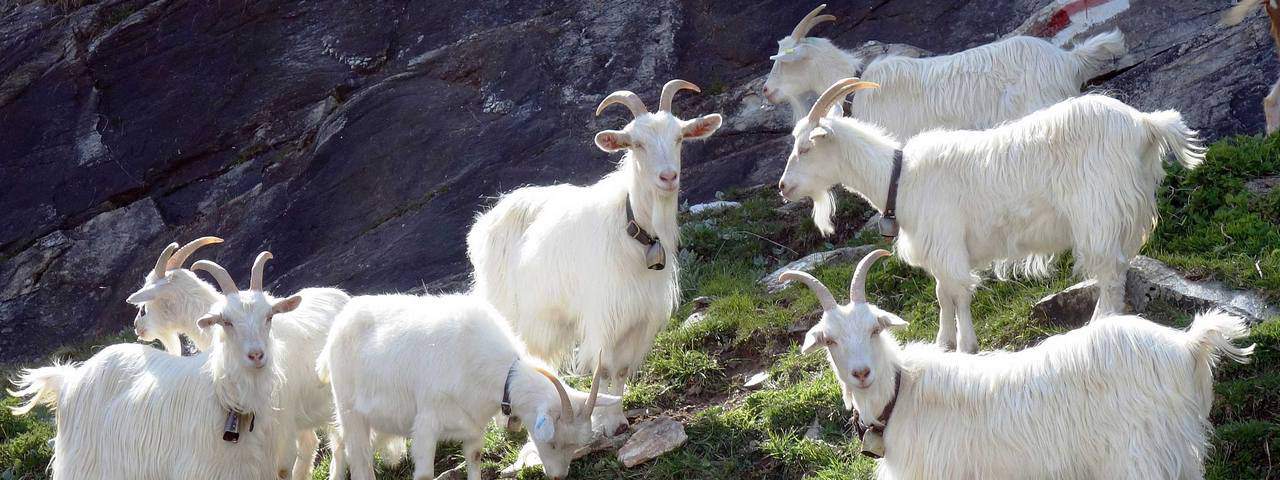
Now that you know the most popular varieties around, how about we go over how you can discern whether your goat is up to the breed standard, starting off with:
Fiber
While there are dual-purpose breeds out there, for the most part, Cashmere goats are judged primarily on their coat quality.
As such, you should always keep in mind the following: the cover and the conformation of the fiber.
As far as the cover is concerned, your Cashmere goat should be completely covered in its wool. So, everything from its neck to its shoulders, sides and hips should be covered in fur.
On top of that, the quality of the fur should consistently be up to par on all of its body, so if the coat starts to get a bit raggedy around the hips, your goat is not up to the breed standards.
When we say conformation though, we primarily refer to its body, which includes its head and horns, its ribcage, the forequarters as well as its back and hind legs. You can quickly tell if you’ve got a healthy specimen or not based on its appearance alone after all.
Chevon
Interestingly enough, in the last couple of years we’ve seen an increasing demand in goats with inferior coats.
This is why you’ll often times see Cashmere goats being bred with Spanish goats. This is because they are a lot more affordable while also providing the clients with delicious goat meat.
Height and Weight
This fully depends on the breed you’ve got on your hands, as Cashmere goats are not an actual breed.
So, just look up your specific breed’s usual weight and height requirements and base your judgement on that.
Wattles
Some breeds may actually have wattles, which can pose quite a problem if you didn’t know about them because when the shearing season comes, you’ll need to watch out for them.
How Much Do Cashmere Goats Cost?
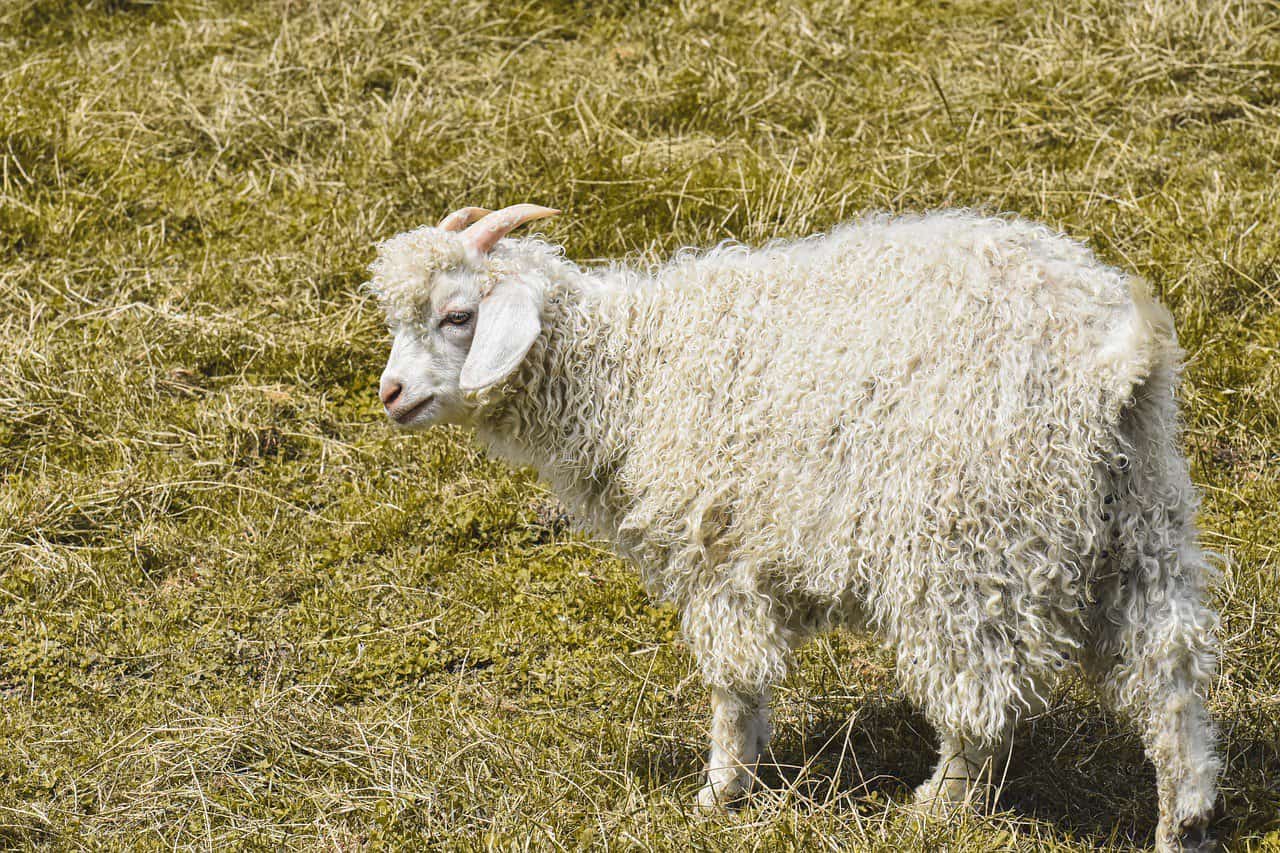
Again, since Cashmere goats are not an actual breed, it’s quite difficult to discern how much one should or shouldn’t cost.
Still, we can safely say that depending on which breed you go for, you can expect to pay anywhere between $75 and $350 per goat.
If you are more interested in making a long-term investment in your goats however, and you want them to actually be perfect to a tee, with all the medical records at the ready, you may be inclined to pay several thousand dollars per goat.
But, for the most part you should keep in mind that this all depends on your general needs. If you just want to make a quick buck while also eventually using the goat for meat you can expect to pay less than $100 per goat.
But if you actually expect the goat’s coat to yield a healthy income on the market you will need to pay up quite a lot.
Behavior and Temperament
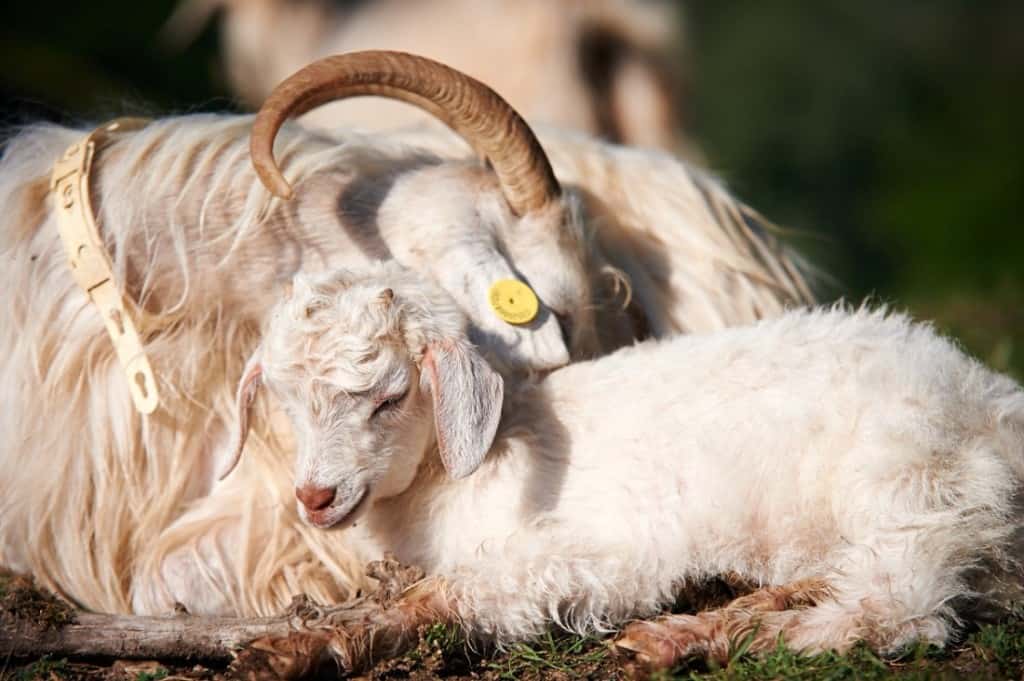
If you have any fears regarding their temperament though, rest assured knowing that cashmere goats are some of the friendliest animals you could have around you.
Even in the wilderness they are a lot more likely to run away with their tail between their legs as opposed to actually attacking you in any way, shape or form.
On top of that they have been domesticated already, so it’s in their genes to be subservient to humans. This means that you will never have to worry about your Cashmere goat ever headbutting you for no reason.
They are also social creatures so if you do want to invest in Cashmere goats we recommend that you get more than one, just so that they don’t get too lonely.
Grooming and Training
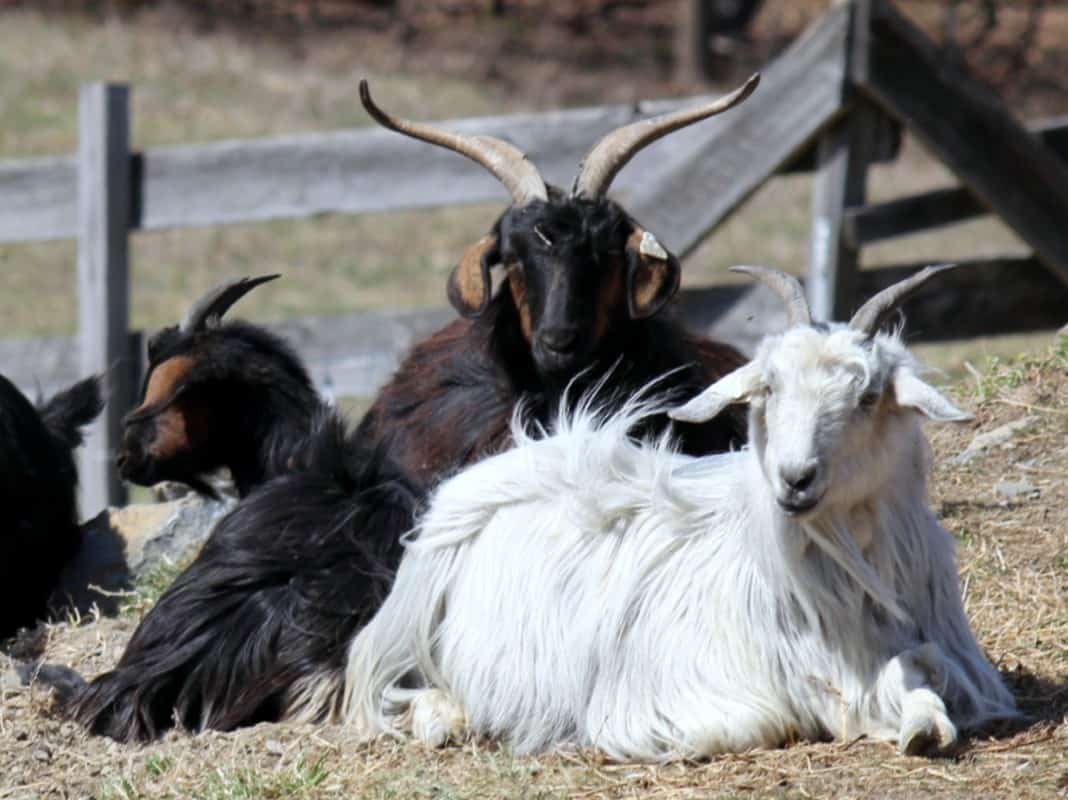
Since the coat is their most valuable asset, you shouldn’t be alarmed to hear that properly grooming them on a regular basis is necessary.
We recommend that you dedicate a full day to grooming and shearing them at least twice a year to make sure that they’re clean, healthy and free of parasites.
Training wise, Cashmere goats are generally very friendly and easy to take care of creatures, so as long as you establish a few ground rules they should follow them without a problem.
For example, by scolding them when it comes to leaving the herd you will make sure that they never do it again, so it’s just minor stuff like that that will not take you longer than a couple of weeks to establish.
Cashmere Goats Diet
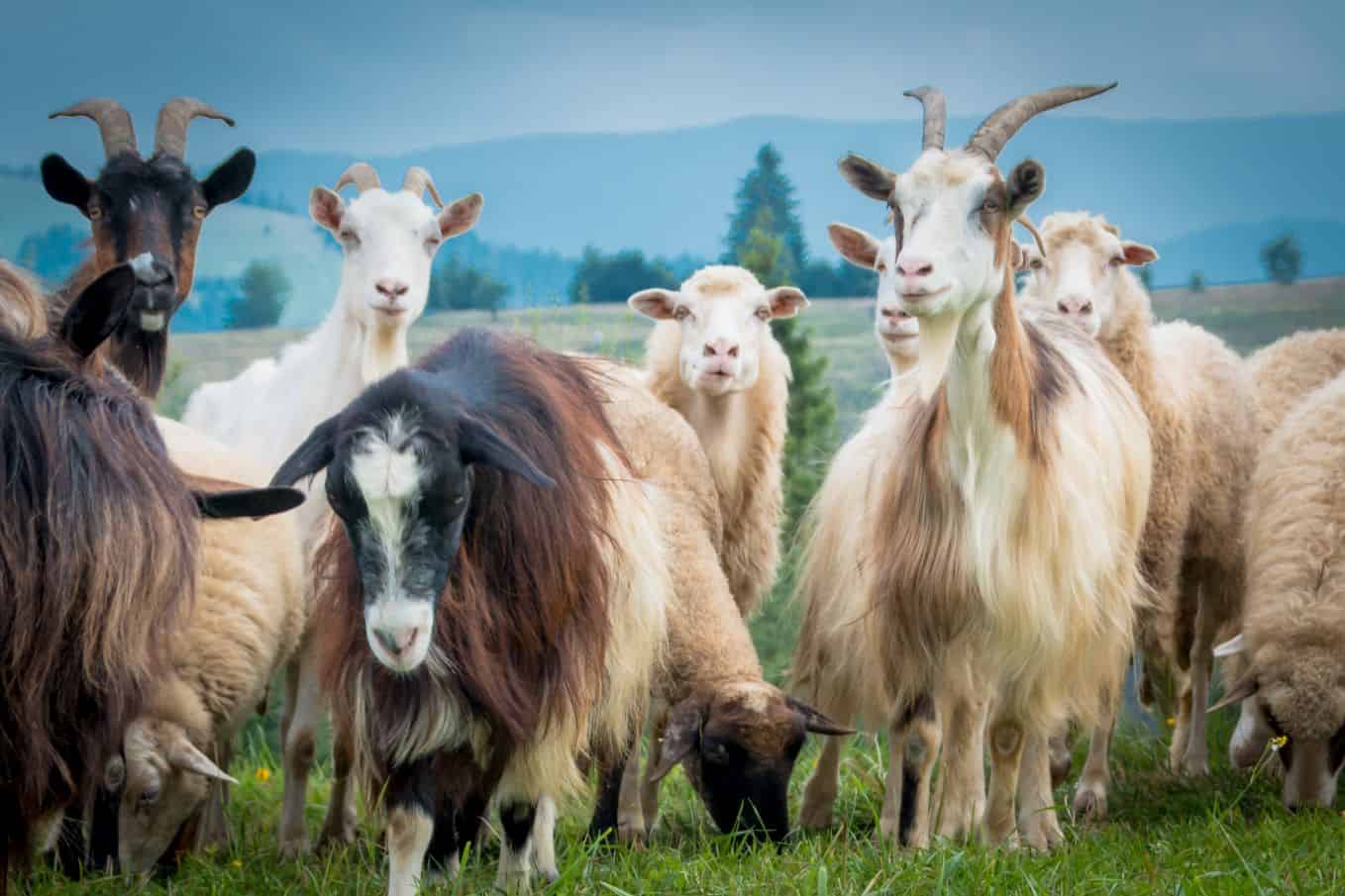
We recommend that you provide your goat with lots of hay as well as plenty of fresh fruits and veggies to make sure that they live good and happy lives.
On top of that you will also need to give them minerals such as salt licks to make sure that they don’t have any deficiencies.
Cashmere Goats Health Issues
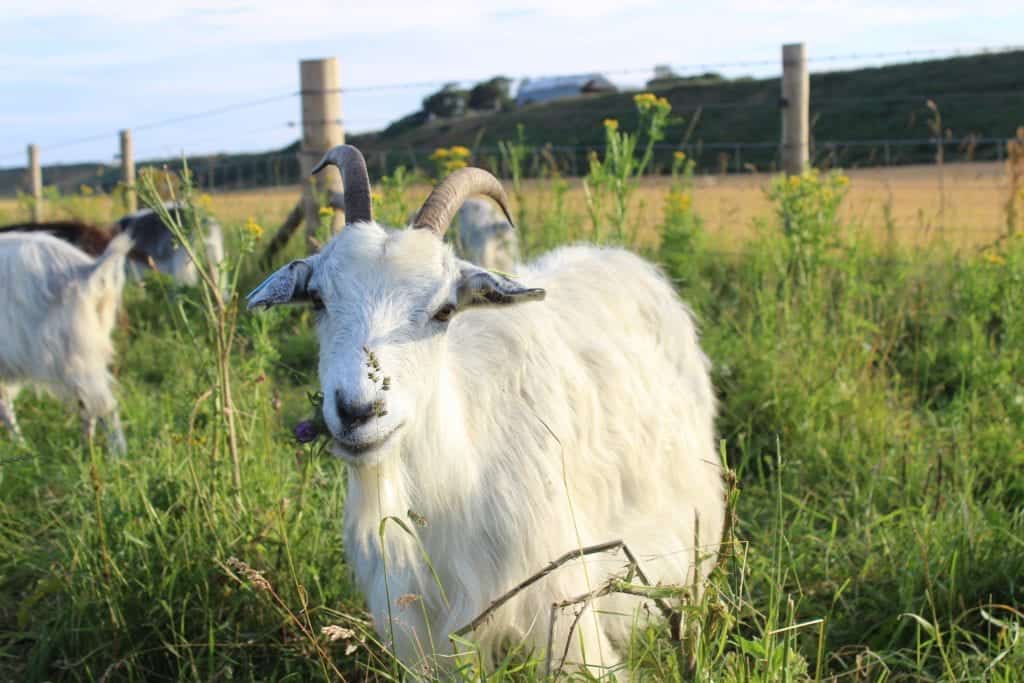
While they are generally healthy little buggers, do keep in mind that you may still want to keep an open mind to notice if there are any problems with your Cashmere goat.
Like, for example, keep a lookout for signs such as poor coat growth, major weight loss, difficulty breathing, swollen eyes or joints and just a general lack of responsiveness.
If you notice any of these signs with your goat, make sure that you contact a medical professional to look them over.
Should You Get Yourself a Cashmere Goat?
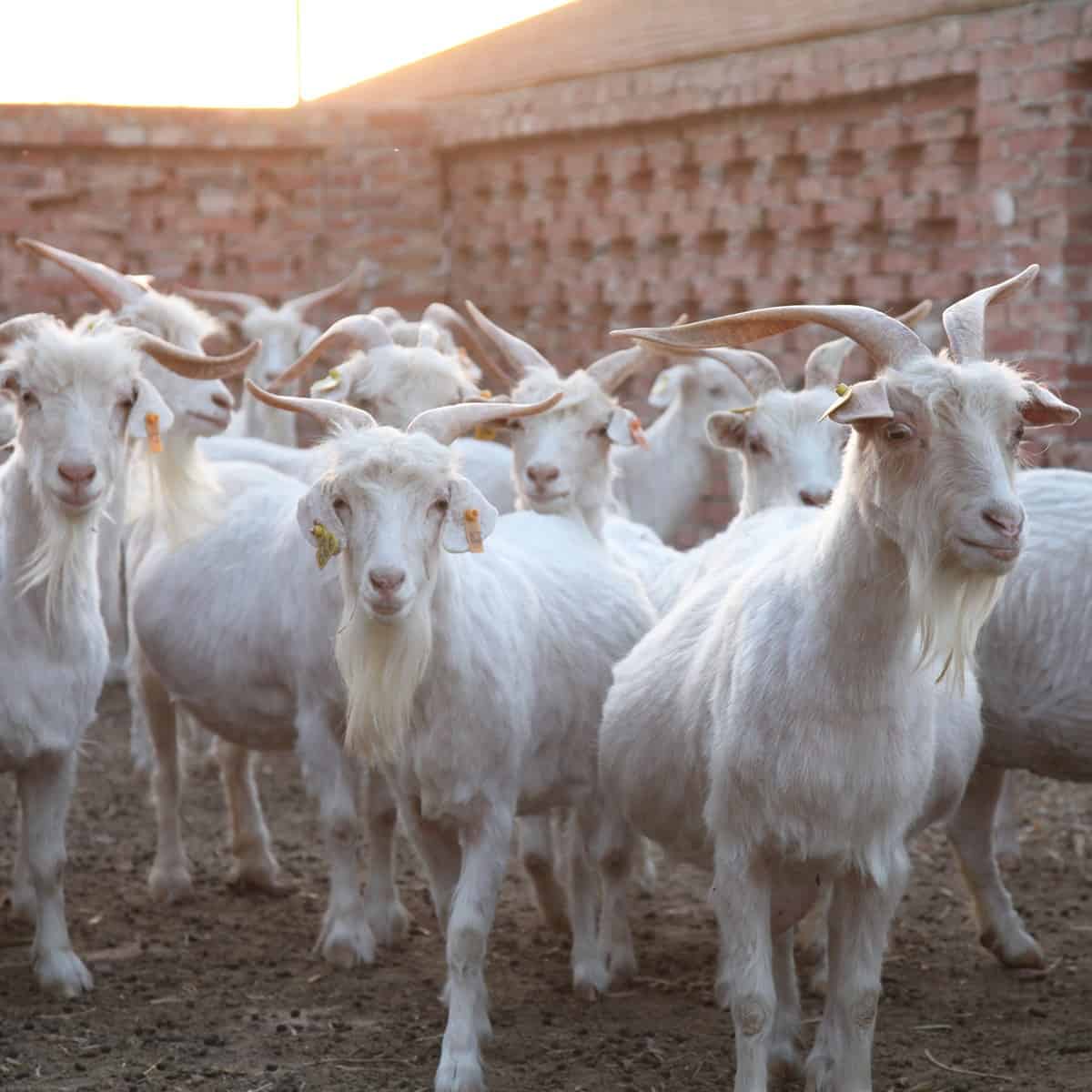
Now, the real question is, should you invest in a cashmere goat? Well, in our honest opinion, if you want one and you feel like you have the ability to properly take care of it and harvest its coat, then why not?
If you do decide to get yourself one though, remember that we told you that Cashmere goats are social creatures that need a lot of company.
So, while it may be a bit more expensive, definitely consider buying them in pairs so as to make sure that they have someone to interact with on a daily basis.
While on this topic, if you already have a herd and you want to introduce your new Cashmere goat to the mix, you my want to do so slowly and carefully.
That’s because Cashmere goats tend to be a bit shier around new groups, which a lot of the time results in them being bullied by the rest of the herd.
So, make sure that this does not happen by always keeping a close eye on the herd, at least during that first week or so.
As soon as the hierarchy of the herd is established and there’s no altercations happening you can rest assured, but until that moment comes, make sure to always keep an eye out for anything of that sort.
Conclusion
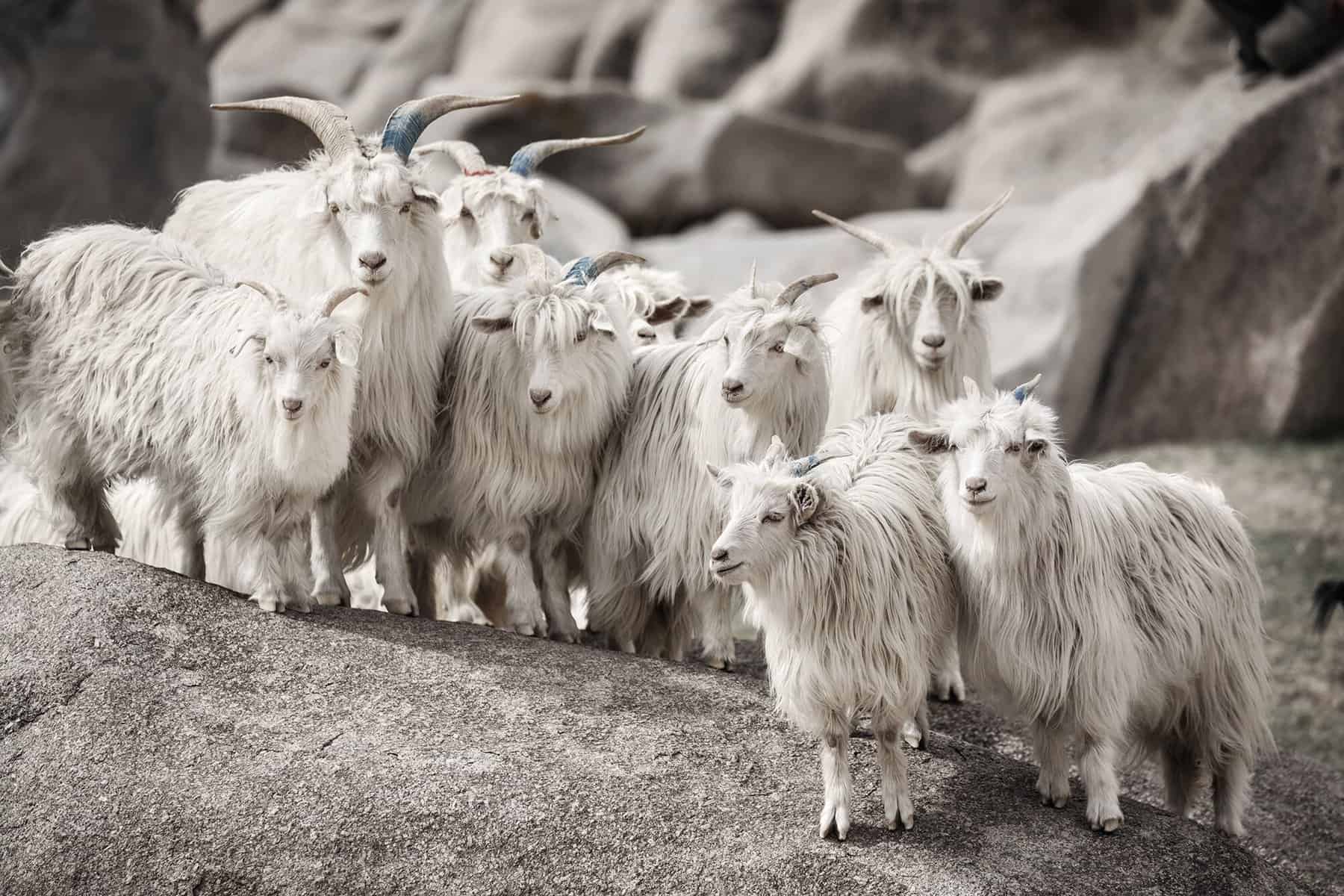
Well, there you have it, that is all that there is for you to know about Cashmere goats. While not a breed in itself, this specific type of goat is still a great option to consider if you’re primarily looking to open up a door towards a new commercial venue.
They can be a bit on the expensive side, sure, but they are well worth it, and if you do want to you can always just raise them for yourself, as you use their cashmere fur to make your own coats and sweaters for winter.
In the end, if you have some free time we highly recommend you to check out Loro Piana’s amazing documentary on Cashmere, The Origin of a Secret.

